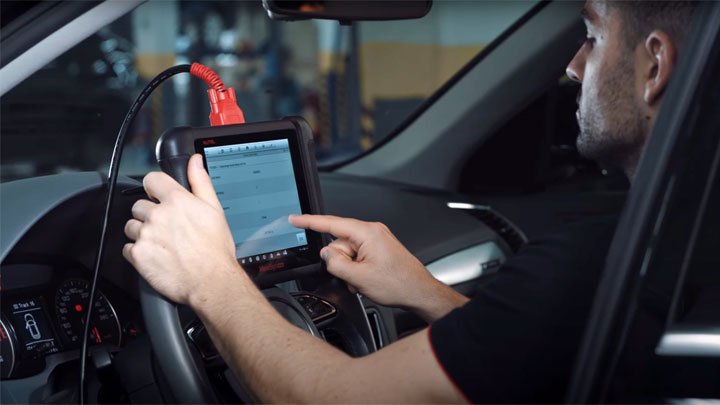Broken Key Repair: Solutions for Common Lock Issues
Introduction
Keys are important tools in our everyday lives, enabling us to protect our homes, lorries, and individual possessions. However, they can likewise break, causing frustrations and inconveniences. Comprehending how to address broken duplicate car keys is vital for anyone wanting to preserve their locks and ensure access to their home. This short article covers different elements of broken key repair, consisting of typical causes, repair techniques, and preventive procedures to avoid future instances.
Common Causes of Broken Keys
Keys can break for a number of reasons. Comprehending these causes can assist in avoiding future incidents:
- Wear and Tear: Over time, keys can wear down due to frequent use, leading to weakened shafts that are more likely to break.
- Poor Key Design: Keys that are improperly created may lack structural integrity, making them more prone to breaking under stress.
- Inaccurate Key Usage: Using excessive force to turn a key, specifically in a jammed lock, can easily lead to a breakage.
- Environmental Factors: Extreme temperature levels or direct exposure to wetness can damage metal keys, causing brittleness.
- Lock Malfunctions: A malfunctioning lock can put undue tension on a key, triggering it to snap during operation.
Signs of a Broken Key
Recognizing a broken key frequently includes obvious indications. Here are some indications:
- Partial insertion into the lock: If the key can not be fully placed or gotten rid of.
- Unexpected resistance: If the key feels stuck when being turned.
- Visible divides or fractures: Inspecting the key can expose fractures or breaks in the metal.
- Insufficient engagement: The key may turn less than needed to actuate the lock.
Approaches for Broken Key Repair
When confronted with a broken key, there are several approaches to consider for repair. It is necessary to select the best one based upon your specific scenario.
1. Eliminate the Broken Key
If a key breaks within a lock, the very first action is to eliminate the broken part:
- Use tweezers or needle-nose pliers: If a piece is standing out of the lock, carefully pull it out.
- Place a key extractor tool: This specialized tool can assist extract lodged parts more successfully.
| Tool | Finest Used For |
|---|---|
| Tweezers | Shallow extraction |
| Key extractor tool | Deeply trapped key pieces |
| Lubricant spray | Easing extraction of stuck parts |
2. Superglue Method
For scenarios where a key has actually partly broken however is undamaged enough to stay grasped, the superglue strategy may offer a short-lived fix.
- Clean the broken surface areas completely.
- Use a thin layer of superglue.
- Hold the pieces together for a couple of minutes till the glue sets.
Note: This approach is not a long-term solution and ought to be utilized with caution as the repair can easily fail under functional tension.
3. Metal Epoxy
For a more robust repair, metal epoxy supplies a more powerful bond than superglue.
- Follow the guidelines on the epoxy product packaging for preparing the adhesive.
- Apply to the broken area and hold up until set (usually a few hours).
4. Duplicate the Key
In instances where lock functionality is important, creating a duplicate key is often the very best route:
- Visit a locksmith: Many locksmith professionals can duplicate keys quickly and efficiently.
- Use a key-tracing service: Some locksmith professionals utilize tracing techniques to cut an identical key based on the remnants.
5. Lock Replacement
When keys consistently break, it may be because of lock concerns rather than key integrity. In such cases:
- Consult a locksmith to assess the lock's condition.
- Consider changing the lock totally if significant damage or wear is evident.
Preventing Key Breakage
Avoiding key breakage is often better than repair. Here are some useful suggestions:
- Limit force on keys: Always turn keys gently to avoid unnecessary stress.
- Routine key examination: Check for wear and replace keys revealing signs of damage.
- Use a keychain: Prevent excessive flexing by using a durable keychain.
- Oil locks: Ensure locks run smoothly to lower pressure on keys.
- Store keys properly: Avoid putting keys in environments that can trigger rust or corrosion.
FAQs About Broken Key Repair
1. Can I repair a broken key myself?
Yes, you can attempt to repair a broken key yourself using methods like the superglue or metal epoxy strategies. However, these are short-lived fixes, and it is a good idea to consult a professional locksmith for a more durable option.
2. Is it worth fixing a broken key?
In many cases, particularly with nostalgic or unique keys, a repair may be worth it. For basic keys, replication or replacement is generally more reliable and reputable.
3. How can I avoid my keys from breaking?
To avoid damage, ensure that keys are exempt to extreme force, regularly inspect them for wear, and keep locks properly maintained.
4. When should I seek a locksmith's help?
If you are not able to get rid of a broken key from a lock or if the lock malfunctions frequently, it's finest to look for a locksmith's know-how.
Broken keys can provide a considerable inconvenience, however they are workable with the ideal technique. By comprehending the common causes and readily available repair methods, individuals can respond efficiently to key damage. Drawing from preventive procedures will also assist preserve key integrity and performance. Eventually, a proactive method to key and lock upkeep can substantially minimize the frequency of these bothersome problems.

